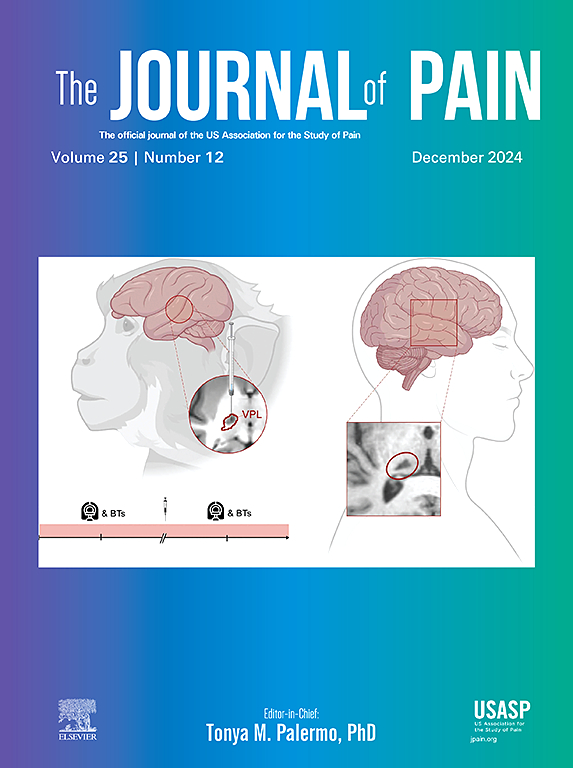The association between childhood maltreatment and pain sensitivity in a high-risk adolescent population
IF 4
2区 医学
Q1 CLINICAL NEUROLOGY
引用次数: 0
Abstract
The risk of developing chronic pain is twice as high among people with a history of childhood maltreatment compared to those without these experiences. It is unclear, however, whether childhood maltreatment might lead to lower or higher perception of pain. In this paper, we investigate the association between childhood maltreatment and pain sensitivity. A sample of 187 Dutch adolescents (ages 16.7 to 20.5) was used from a population-based cohort at high-risk for emotional and behavioral problems screened at age 13. The Childhood Trauma Questionnaire short form (CTQ-SF) was completed to measure emotional, physical, sexual abuse, and emotional and physical neglect. To asses pain sensitivity, a thermal quantitative sensory testing procedure was used which measured pain from hot and cold stimuli. Individuals reporting childhood sexual abuse, emotional abuse or neglect and physical neglect could on average withstand hot and cold pain of 1.03 °C [0.13, 1.84] to 3.20 °C [0.62, 5.97] more across different types of abuse compared to those with no emotional abuse or (physical) neglect history. Physical abuse was not associated with pain sensitivity. The current findings suggest that childhood maltreatment might lead to habituation to painful stimuli as opposed to increased pain sensitivity.
高危青少年人群中儿童虐待与疼痛敏感性之间的关系。
有童年虐待史的人患慢性疼痛的风险是没有这些经历的人的两倍。然而,尚不清楚童年虐待是否会导致更低或更高的疼痛感知。在本文中,我们调查儿童虐待与疼痛敏感性之间的关系。187名荷兰青少年(16.7至20.5岁)的样本来自一个以人群为基础的队列,在13岁时进行了情绪和行为问题的筛查。完成儿童创伤问卷简短形式(CTQ-SF)来测量情感、身体、性虐待以及情感和身体忽视。为了评估疼痛敏感性,使用了热定量感觉测试程序来测量热刺激和冷刺激的疼痛。在不同类型的虐待中,报告儿童期性虐待、情感虐待或忽视和身体忽视的个体比没有情感虐待或(身体)忽视史的个体更能承受1.03°C[0.13, 1.84]至3.20°C[0.62, 5.97]的冷热疼痛。身体虐待与疼痛敏感性无关。目前的研究结果表明,童年虐待可能会导致对疼痛刺激的习惯,而不是增加疼痛敏感性。
本文章由计算机程序翻译,如有差异,请以英文原文为准。
求助全文
约1分钟内获得全文
求助全文
来源期刊

Journal of Pain
医学-临床神经学
CiteScore
6.30
自引率
7.50%
发文量
441
审稿时长
42 days
期刊介绍:
The Journal of Pain publishes original articles related to all aspects of pain, including clinical and basic research, patient care, education, and health policy. Articles selected for publication in the Journal are most commonly reports of original clinical research or reports of original basic research. In addition, invited critical reviews, including meta analyses of drugs for pain management, invited commentaries on reviews, and exceptional case studies are published in the Journal. The mission of the Journal is to improve the care of patients in pain by providing a forum for clinical researchers, basic scientists, clinicians, and other health professionals to publish original research.
 求助内容:
求助内容: 应助结果提醒方式:
应助结果提醒方式:


